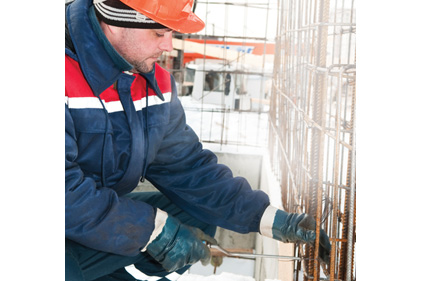Frostbite occurs when the skin and body tissue just underneath it freezes. It usually affects the nose, ears, cheeks, chin, fingers or toes and can permanently damage body tissue. In severe cases, it can lead to amputation. Symptoms of frostbite include numbness; a tingling, stinging or aching sensation; and skin that appears blue-tinged or waxy.
When exposure to extremely cold weather — or cold water — causes the body to lose heat faster than it can produce heat, it can lead to a dangerously low body temperature called hypothermia. If medical treatment is not rendered quickly, a victim of hypothermia may experience heart and respiratory failure and can even die.
The National Institute for Occupational Safety and Health (NIOSH) warns that hypothermia is particularly dangerous because it affects the brain, making the victim unable to think clearly or move well. Symptoms of hypothermia range from fatigue, loss of coordination and disorientation to blue skin, slowed pulse and breathing and loss of consciousness.
Cold and accidents
In addition to the obvious health risks, extreme cold can decrease efficiency and increase the likelihood of work-related accidents, because it affects the performance of both mental and physical tasks. “Manual tasks are impaired because the sensitivity and dexterity of fingers are reduced in the cold,” notes the The Canadian Centre for Occupational Health & Safety. “At even lower temperatures, the cold affects the deeper muscles, resulting in reduced muscular strength and stiffened joints.”1
What to consider when choosing PPC
A successful strategy for avoiding cold-related problems — and the lost work time they cause — includes wearing Protective Personal Clothing (PPC). OSHA calls the use of warming PPC “the most important step in fighting the elements.”2 When selecting PPC, take into account:
- Specific weather conditions you will be exposed to (temperature, wind, wetness)
- Types of tasks you must accomplish (Do they require dexterity? The ability to grip? Move freely?)
Layering 2.0
We all know layering is the best way to protect the body against cold, but a lesser-known fact is that those layers should be relatively loose. NIOSH reminds us that tight clothing reduces blood circulation — and keeping blood circulating to the extremities is one of the challenges of spending time in very cold conditions. Additionally, such clothing may restrict movement, hindering the ability to operate dangerous equipment.
OSHA recommends wearing at least three layers of clothing:
- An outer layer to break the wind and allow some ventilation, preferably made from Gore-Tex® or nylon
- A middle layer of wool or synthetic fabric (such as Quallofil® made by DuPont) that will absorb sweat and retain insulation in a damp environment. (Although down is useful as a lightweight insulator, it becomes ineffective once it is wet.)
- An inner layer of cotton or synthetic weave that will allow ventilation.
Head to toe
Since up to 40 percent of the body’s heat is lost through the exposed head, some form of head protection is vital for cold-weather workers. Available options range from knit caps to balaclavas, a type of cloth headgear that covers the head and most of the face, leaving only the eyes or eyes and mouth exposed. For someone who will be wearing a hard hat or hearing protection, a knit ear band or knit or flannel hard-hat liner may provide sufficient protection. Insulated earmuffs made of fleece and lined with synthetic materials will keep the ears warm but they are not as effective as hats at conserving overall body heat.
Extremities versus extreme cold
Exposure to icy temperatures causes the blood flow to be concentrated on the body’s core, leaving hands and feet especially vulnerable to the effects of cold, like frostbite and circulatory slowdowns.
However, protecting hands and fingers can be a challenge, because they must not be so well covered that they are unable to perform work-related tasks that require them to flex and grip.
Fortunately, a number of manufacturers offer cold-weather work gloves that preserve flexibility and dexterity while still keeping the wearer warm. If gloves lack built-in knit liners, wearing cotton liners under gloves — even thin ones — can boost hand safety considerably, because they move moisture away from the skin and supply that all-important inner layer of insulation.
Like hands, feet experience less vigorous blood circulation in the cold, making them susceptible to serious injuries. Winter’s special circumstances may warrant seasonal-specific footwear. If exposure to rain or snow is likely, those favorite leather boots that are worn in milder weather should be left in the closet. Insulated rubber boots are much more effective at acting as a barrier to precipitation. PPC for the feet should be larger than the size normally worn, in order to accommodate thick socks and, beneath them, thin cotton liners that provide a layer of insulation. Workers who will have to contend with icy or slippery conditions should also look for footwear with slip-resistant features.
From long underwear to high tech
As with other body parts, heat loss from the core is caused by exposure to low temperatures and cold air or direct contact with a cooler object, such as cold water. Wearing wet clothing, in fact, can cause a five-fold increase of heat loss through conduction.1
Fortunately, there are numerous options for protecting the core, from the traditional (long underwear, the sweater Aunt Rose knit for you) to the high-tech. In the latter category are winter liners and vests that are heated or that contain channels or pockets that hold warming heat packs. These small, lightweight packets contain chemicals that oxidize when exposed to air, producing a reaction that releases heat. They come in various sizes and last anywhere from five to eleven hours.
Beyond PPC
Regardless of the warming PPC used, people who must work in extremely cold weather should move into warm locations on work breaks, carry extra clothing if there’s a chance they’ll get wet and most important, learn to recognize the symptoms of cold-related stresses.
References
1 www.ccohs.ca/oshanswers/phys_agents/cold_general.html
2 Fact Sheet No. OSHA 98-55
3 From Marine Corps Systems Command: www.marcorsyscom.usmc.mil/sites/pmice/InfoPapers/Clothing/MittenSystem.pdf
|
How warriors stay warm |
|
They’re nicknamed “Bunny Boots,” but there’s nothing silly about the Extreme Cold Vapor Barrier Boots worn by U.S. soldiers when they’re helping to patrol the Canadian Arctic, as part of the North American Aerospace Defense Command (NORAD). Up to an inch of wool and felt insulation between two layers of rubber — along with a pair of thick wool socks — help keep the wearers’ feet warm and dry in temperatures as low as -65 degrees Fahrenheit. As with many items originally intended for military use only, Bunny Boots have become popular with civilians living in Alaska and the Canadian Arctic. A word of warning about this high tech footwear: each pair includes air valves. If the wearer doesn’t open the valves and release the air trapped between insulation valves prior to flying, the boots could rupture. U.S. Marines assigned to Elmendorf Air Force Base in Alaska and other cold corners of the world don’t just wear mittens; they wear a mitten system — part of the U.S. military’s Extreme Cold Weather (ECW) collection of clothing and accessories. The ECW Mitten System consists of a waterproof nylon mitten shell with a leather palm, a removable water repellant insulated liner with a no-slip grip and a FR glove insert made from a water repellant-treated knitted Nomex/Lycra blend with grip dots on the fingers and palm. These mittens are touted as providing “improved environmental protection” over the insulated trigger finger mittens they’ve replaced.3 |




